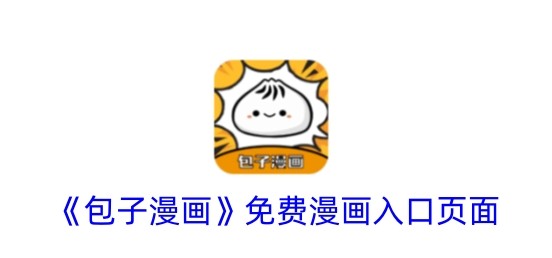Dictionary, SortedDictionary, SortedList 比较
时间:2010-11-23 来源:shengtianlong
- Dim TestObject As New SortedDictionary(Integer, Integer)
- With TestObject
- .Add(7,2)
- .Add(0,1)
- .Add(5,3)
- .Add(1,1)
- .Add(4,4)
- End With
- For Each kvp As Collections.Generic.KeyValuePair(Of Integer, Integer) In TestObject
- MsgBox kvp.Key
- Next
得到的顺序是 0, 1, 4, 5, 7 (SortedList 同样)
但是如果把 SortedDictionary 换成 Dictionary, 结果就是 7, 0, 5, 1, 4.
另一种遍历方法:
- With TestObjectx.GetEnumerator()
- While .MoveNext()
- MsgBox(.Current.Key)
- End While
- End With
--- 华丽的分割线 ---
SortedList<(Of <(TKey, TValue>)>) 泛型类是具有 O(log n) 检索的二进制搜索树,其中 n 是字典中元素的数目。就这一点而言,它与 SortedDictionary<(Of <(TKey, TValue>)>) 泛型类相似。这两个类具有相似的对象模型,并且都具有 O(log n) 的检索运算复杂度。这两个类的区别在于内存的使用以及插入和移除元素的速度:
SortedList<(Of <(TKey, TValue>)>) 使用的内存比 SortedDictionary<(Of <(TKey, TValue>)>) 少。
SortedDictionary<(Of <(TKey, TValue>)>) 可对未排序的数据执行更快的插入和移除操作,它的运算复杂度为 O(log n),而 SortedList<(Of <(TKey, TValue>)>) 的运算复杂度为 O(n)。
如果使用排序数据一次性填充列表,则 SortedList<(Of <(TKey, TValue>)>) 比 SortedDictionary<(Of <(TKey, TValue>)>) 快。
SortedDictionary<(Of <(TKey, TValue>)>) 类和 SortedList<(Of <(TKey, TValue>)>) 类之间的另一个区别是:SortedList<(Of <(TKey, TValue>)>) 支持通过由 Keys 和 Values 属性返回的集合对键和值执行高效的索引检索。访问此属性时无需重新生成列表,因为列表只是键和值的内部数组的包装。
网上有一种说法, 就是 SortedList 内部就是两个数组, 插入的时候类似 O(n^2) 的插入排序 (每个动作为 O(n)), 不过插入有序数据特别快 (每个动作变成 O(1)). 同样的情况出现在删除数据.
- Dim TestObject As New SortedList(Of Integer, Integer)
- For i As Integer = 1 To 1000000
- TestObject.Add(i, RandomGenerator.Next())
- Next
当然, RandomGenerator 是我们的随机数发生器:
- Dim RandomGenerator As New Random
上述代码执行速度相当快, 因为插入的数据的 Key 值是有序的.
如果把 i 换成 1000000 - i, 则速度立刻慢得惨不忍睹.
同样的情况出现在把 i 替换成随机数. 在一段时间的等待后出错: 因为 Key 值不能重复.
这样说来, SortedList 不太像二叉树结构.
SortedList 还有一个功能, 就是直接访问 Key 值大小排名为 k 的 Key 和 Value.
方法是 Object.Keys(k) 和 Object.Values(k).
这更加印证了网上的说法.
我认为 SortedList 没什么用 - 除非是对基本有序的数据, 或者对内存非常吝啬. 如果仅仅需要在 BST 上加上查找排名为 k 的节点的功能, 可以使用一个经典算法: 在每个节点上加上一个 leftsize, 储存它左子树的大小. (当然也可以用 CQF 的 SBT. 那个 SB maintain... 扯远了~)
2. 功能
这三个类的功能上面都讲得差不多了. 因为实现就决定了功能. 这里小结一下.
Dictionary 的功能:
Add<K,V>, Clear, Contains<K/V>, GetCount, Enumerator (无序), GetItem<K>, Remove<K>
SortedDictionary 新增的功能:
Enumerator 为有序 - 对应 BST 的中序遍历.
SortedList 新增的功能:
Capacity(Set/Get) - 毕竟人家是数组
IndexOfKey, IndexOfValue (返回 Value 对应 Key 的排名而不是 Value 的排名)
Keys(k), Values(k) - 返回按照 Key 排序的数组的第 k 个元素
3. 速度
实践出真知 - 某名人.
理论和实践不符就是错的 - Thity.
我们的测试程序:
- Module DictionarySpeedTest
- Dim RandomGenerator As New Random
- Dim ArrayListData As New List(Of Key_N_Data)
- Dim TestObject As New Dictionary(Of Long, Long)
- Structure Key_N_Data
- Dim Key As Int64
- Dim Data As Int64
- End Structure
- Const ITEM_COUNT As Integer = 1000000
- Const TEST_COUNT As Integer = 500000
- Dim LastTick As Long
- Sub TimerStart(ByVal Text As String)
- Console.Write(Text)
- LastTick = Now.Ticks
- End Sub
- Sub TimerEnd()
- Dim t As Integer = Now.Ticks - LastTick
- Console.WriteLine(((t) \ 10000).ToString() & " ms")
- End Sub
- Sub Main()
- Process.GetCurrentProcess.PriorityClass = ProcessPriorityClass.High
- Console.WriteLine(TestObject.GetType().ToString())
- TimerStart("Generating data... ")
- For i As Integer = 1 To ITEM_COUNT
- Dim ThisKeyData As Key_N_Data
- ThisKeyData.Key = (CLng(RandomGenerator.Next()) << 31) or RandomGenerator.Next()
- ThisKeyData.Data = (CLng(RandomGenerator.Next()) << 31) or RandomGenerator.Next()
- ArrayListData.Add(ThisKeyData)
- Next
- TimerEnd()
- TimerStart("Test 1: add data test... ")
- For Each Item As Key_N_Data In ArrayListData
- TestObject.Add(Item.Key, Item.Data)
- Next
- TimerEnd()
- TimerStart("Test 2: find data test... ")
- For i As Integer = 1 To TEST_COUNT
- With ArrayListData.Item(RandomGenerator.Next(0, ITEM_COUNT))
- If Not Equals(TestObject(.Key), .Data) Then MsgBox("Error!")
- End With
- Next
- TimerEnd()
- TimerStart("Test 3: remove data test...")
- For i As Integer = 1 To TEST_COUNT
- TestObject.Remove(ArrayListData.Item(RandomGenerator.Next(0, ITEM_COUNT)).Key)
- Next
- TimerEnd()
- End Sub
- End Module
通过更改 TestObject 的类型, 我们可以很方便地比较这三个类的速度. 测试结果:
ADD FIND REMOVE
Dictionary 265ms 203ms 187ms
SortedDictionary 1843ms 828ms 1234ms
SortedList N/A
我们把 ITEM_COUNT 和 TEST_COUNT 都减小 10 倍:
ADD FIND REMOVE
Dictionary 15ms 31ms 15ms
SortedDictionary 93ms 46ms 38ms
SortedList 8031ms 15ms 6046ms
SortedList 的随机查找居然比 Dictionary 和 SortedDictionary (Hashtable 和 BST) 还要快. 这样说来, SortedList 似乎又不是简单的数组了. (不过我仍然觉得它没什么用)
4. 小结
如果只是当作索引使用, 请用 Dictionary.
如果需要查找最小的几个元素, 或者需要按顺序遍历元素, 就用 SortedDictionary.
如果输入/删除的元素是基本增序的, 或者访问次数远多于修改次数, 或者需要访问第 k 大的元素, 或者对内存吝啬得 BT 的情况, 用 SortedList 吧. (它居然成使用情况最多的了... orz)
PS: 微软似乎也很吝啬, SortedDictionary 居然只支持增序 (默认的比较器), 如果要降序的话, 我们得自己写一个比较器.
- Class MyComparer
- Inherits Comparer(Of Long)
- Public Overrides Function Compare(ByVal x As Long, ByVal y As Long) As Integer
- Return Comparer(Of Long).Default.Compare(y, x)
- End Function
- End Class
- Dim TestObject As New SortedList(Of Long, Long)(New MyComparer)
现在我们可以来进行一下刚开始的时候提到的 Dictionary vs Hashtable 对决.
- Const ITEM_COUNT As Integer = 1000000
- Const TEST_COUNT As Integer = 500000
ADD FIND REMOVE
Dictionary(Of Long, Long) 271ms 203ms 187ms
Dictionary(Of Object, Object) 468ms 312ms 234ms
Hashtable 859ms 390ms 218ms
结论: 最好用 Dictionary 代替 Hashtable.










